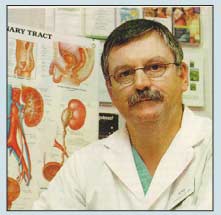The accredited CME learning activity based on this article is offered under the auspices of the CE department of the University of Toronto. Participating physicians are entitled to one (1) MAINPRO-M1 credit by completing this program, found online at www.geriatricsandaging.ca/cme.htm
 Peter Pommerville, BA, MD, FRCS(C), Director of Research, Can-med Clinical Research, Inc.; Consulting Urologist, Vancouver Island Health Authority,
Peter Pommerville, BA, MD, FRCS(C), Director of Research, Can-med Clinical Research, Inc.; Consulting Urologist, Vancouver Island Health Authority,
Vancouver, BC.
Abstract:Sildenafil was introduced in Canada in 1998 as the first effective oral therapy for erectile dysfunction (ED). Since its release, sidenafil has been proven to be an effective and safe treatment for ED in older patients with multiple medical problems. In the last year, two new PDE5 inhibitors have been approved for ED treatment: vardenafil and tadalafil. There are subtle differences between the three phosphodiesterase type 5 (PDE5) inhibitors with respect to efficacy, dosing instructions, and adverse event profiles. All three PDE5 inhibitors have exhibited efficacy and safety in the cardiac patient as long as he is not reliant upon the regular use of nitroglycerine. This article reviews the similarities and differences between the three PDE5 inhibitors, and refers to patient attitudes in Canada towards sexual activity and its treatment with these agents, as discussed in the Canadian Sexual Satisfaction Survey (CSSS).
Key words: Erectile dysfunction, phosphodiesterase inhibitor, sildenafil, vardenafil, tadalafil
Introduction
Physicians in Canada are treating an increasingly aging population, and coupled with this is an increase in the incidence of specific diseases that may arise as a result of the breakdown of biological mechanisms (e.